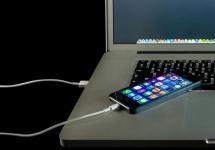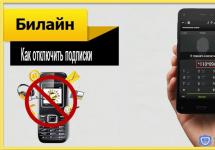Do Not Disturb mode appeared in iOS 6. Subsequently, with each new version of iOS, the function changed slightly or did not change at all. In my opinion, this is one of the most useful options of the system.
How I use Do Not Disturb mode
Once upon a time, about 8 years ago, I read a book by Tim Ferriss with a long title, “How to work 4 hours a week and not be stuck in the office “from bell to bell,” live anywhere and get rich.” There flashed a thought that sank into my soul for a long time. I don’t remember the quote, so I’ll give the gist: “There are no letters so important that they cannot be answered later.” Tim suggested answering letters at strictly defined times, on strictly defined days of the week, in order to save time.
It’s the same with calls to my cell phone: I’ve since decided that there can be no super-important calls that I couldn’t answer later. Therefore, when you come to a cinema, theater, sporting event, etc. With a clear conscience, I set the “Do not disturb” mode and enjoy the spectacle. At night, I also set the “Do not disturb” mode and sleep peacefully.
All my friends and relatives know about this and never complain that they had an urgent call. We're used to it. Even the courier from the Labyrinth no longer bothers me with his calls in the morning. And I feel calmer...
How to enable Do Not Disturb mode? Settings
Do Not Disturb mode is enabled:
- If the screen is locked, calls will be automatically rejected. The caller will immediately receive a signal that you are “Busy”;
- if the screen is locked, all sound alerts will be muted;
- if the screen is unlocked, you will see calls and notifications, but the iPhone and iPad will not make any sounds (depending on the settings);
- The alarm takes precedence over Do Not Disturb. All your set alarms will go off on time.
There are two ways to enable Do Not Disturb mode:
Swipe up from the bottom of the screen. The Control Center appears, in which you need to click the crescent moon icon.
Second method: you need to turn on the switch in Settings->Do Not Disturb->Manual.


Let's look at the mode settings:
Planned – you can set “Start” and “End” accurate to minutes. During this period, Do Not Disturb mode will turn on automatically.
Call Allowance– here you can specify those groups of contacts that will ignore the “Do not disturb” mode. That is, if a contact, for example, from Favorites calls you, the call will go through.
Attention! To avoid creating groups and set an exception for one person. Go to the Contacts application and find the desired contact. Then go to the “Ringtone” section and turn on the “Boost during emergency” switch. The option is available in . From now on, calls from this contact will bypass Do Not Disturb mode.

Repeated calls– the second call from the same subscriber will go through. This is actually a stupid option, because many people immediately call back if they hear a busy tone. I never turn it on.
Silence– here you indicate whether the iPhone should make sounds when it is unlocked.
Have a good day and good night everyone. :)
Just a few simple steps.
Do Not Disturb mode on iPhone lets you block incoming calls, messages, and notifications when you go to bed or don't want your phone to distract you from work. IN iOS 12 the function has gained additional capabilities and can now automatically turn off after a certain time, when the geoposition changes, or when an event in the calendar ends. We figured out how to use the updated Do Not Disturb mode.

Additional features are easy to use. Open the Control Center curtain by swiping from the bottom or from the top left corner of the screen if you have an iPhone X or iPad. Long-press the Do Not Disturb mode icon and select the desired option.

- For 1 hour- blocks incoming calls, messages and notifications for an hour.
- Until this morning/lunch/evening- allows you not to be distracted by your iPhone for several hours at once, depending on the current time of day.
- Before I left this location- turns off sounds and notifications until you change your geolocation, for example, when you come home from work.
- Until the end of the current event- makes the device silent until the end of the event from your calendar.
If these settings are not enough, you can click on the “Schedule” button. It opens a menu with additional settings. With their help, you can set the time for automatically turning on and off the Do Not Disturb mode, the Bedtime function, contact tolerance and other options.

First appeared in iOS 6 and OS X Mountain Lion operating systems. Its essence lies in the ability to limit incoming calls and messages from all subscribers or a specific category of them. Let's take a closer look at what happens when users try to call you or send an SMS (iMessage) under the conditions of the activated mode " Do not disturb».
In contact with
The Do Not Disturb feature allows iPhone, iPad and Mac users to block calls or SMS messages from different groups of subscribers at predetermined times. This mode can be used, for example, during intensive work, when any external irritant can interfere with the work process, or, for example, at night. The option is activated in the Settings of iOS gadgets (and Control Center) and in the System Preferences of Mac computers.



By activating the toggle switch Planned the user can set a time at which no one can reach him.
In chapter Call Allowance you can specify a group of contacts or subscribers from a category Favorites, on which the action of the mode " Do not disturb" will not be distributed - their calls and text messages will be passed through unhindered.
Activated switch Repeated calls will allow the subscriber to get through only the second time, provided that the repeated call was made within 3 minutes.

What happens if you receive calls and messages while you are in Do Not Disturb mode?
Users trying to call a subscriber with the “ Do not disturb", will constantly encounter the signal " busy" At the time of a call or sent message, the iPhone or iPad screen won't light up. At the same time, after the screen is activated, the iPhone will inform its owner about a missed call and message. That is, all attempts to reach a user with the “ Do not disturb», will be displayed in the history of calls and messages, not accompanied by any sound signals.

For special cases, when calls only from individual subscribers become unwanted, you can add their numbers to the “black list” in the gadget settings (). True, it will be possible to bypass such a block by calling from a hidden or unauthorized number.
Reading time: 2 minutes
Surely many iPhone users have had to choose between turning on silent mode and activating the Do Not Disturb function.
Both of these options are used to turn off sound in iOS, but their functional characteristics are different. Therefore, it is worth understanding their differences.
Features of silent mode
To launch silent mode on the iPhone, just move the lever located on the side of the device. This action takes almost no time and is very convenient, so almost all smartphone owners use this method in a variety of situations.
- Settings
- Sounds
- In silent mode
Using this option involves turning off all signals, notifications, and application sounds. At the same time, the phone continues to receive messages with calls, which are reported to the owner by means of vibration and a lit-up screen. If there is a need to prevent the display from being activated, you need to use another mode.
How to enable Do Not Disturb feature on iPhone?
By using this option, the owner of the gadget completely turns off the display and all kinds of sounds. The only exception would be calls to contacts from the favorites list. To enable Do Not Disturb mode, you can use two methods: configure it automatically according to a given schedule, or do it manually by visiting the Control Center.
You can call up the enable option by pulling two fingers down from the top edge of the screen and select “crescent” in the menu that appears (screenshot on the left), or select the appropriate item in “Settings” (screenshot on the right):
If the function is active, a small crescent moon will appear in the status line. You can set a specific time in your schedule when calls with messages will be automatically muted. Turning on a certain toggle switch will allow contacts from the favorites list to be dialed when they call again within three minutes. Typically, the mode is active only when the screen is locked, although certain settings can prevent calls while using the iPhone.
The main differences between the listed functions are determined by the scenarios of their application. It is preferable to use silent mode if the mobile device is in a bag or pocket, since it will not be distracting with a lit screen. At the same time, the owner of the phone remains aware of incoming calls. Its use will be especially relevant when watching films in a cinema, at an exhibition, concert, etc.
iOS provides two ways to prevent your iPhone from ringing in inappropriate situations. For example, you can turn on silent mode (using the switch located on the side) or set up the Do Not Disturb software feature. Both methods mute the sound, but there are significant differences between them, which not everyone knows about.
Silent mode on iPhone
The easiest way to mute your iPhone is to use the switch located above the volume buttons on the left side of the case. Surely many people already instinctively reach for the switch when they go to a cinema, school, church, etc., without even realizing it.

The above method mutes calls, messages, notifications and even games, but the iPhone will still vibrate when there is an incoming call, and the screen will light up when receiving an SMS. You can turn off vibration by going to “Settings” → “Sounds, tactile signals” and moving the switch to the left opposite “Vibration in silent mode”.

Even though vibration will be turned off, the screen will still light up when there is an incoming message.
Do Not Disturb Mode
With Do Not Disturb enabled, your iPhone will remain silent and the screen will remain turned off for incoming calls and messages. However, you can set up exceptions so you don't miss an important call.

ON THIS TOPIC: What happens to calls and SMS when you're in Do Not Disturb mode on your iPhone or iPad.
There are two ways to enable Do Not Disturb mode. The simplest of them is to swipe your finger up from the bottom of the screen, calling up “Control Center”, and click on the crescent-shaped icon.

The crescent icon in the status bar will indicate that Do Not Disturb mode is enabled:

You can also go to “Settings” → “Do not disturb” and slide the switch opposite “Do not disturb”.

You can select a specific time when you want your iPhone (iPad) to go into silent mode (for example, at night from 23:00 to 6:00). In addition, the settings allow you to select contacts from whom you can receive calls even when Do Not Disturb mode is activated. Allow Calls allows you to allow calls from everyone, no one, selected users, or specific groups of contacts.
The “Repeat calls” option allows you to receive repeated calls from particularly persistent ones if they were made within three minutes after the first one. Silent mode allows you to turn off beeps whenever or when your iPhone is locked.
We talked in detail about how to properly set up Do Not Disturb mode on iPhone, iPad and Mac in this material.
When is it recommended to use silent mode or Do Not Disturb mode?
The main difference between the two modes described above is the glowing screen when receiving messages and notifications if silent mode is activated. If you are used to carrying your iPhone in your pocket or bag, then there is nothing easier than turning off the sound by sliding the switch with one movement of your hand. However, keep in mind that vibration can be just as annoying and attention-grabbing as a ringtone.
If you always keep your device in your hand, on your lap, or on a desk, it's best to use Do Not Disturb mode to keep the glowing screen from being noticeable and causing unnecessary attention.
Based on materials from yablyk


